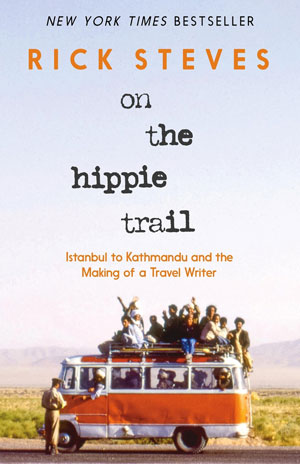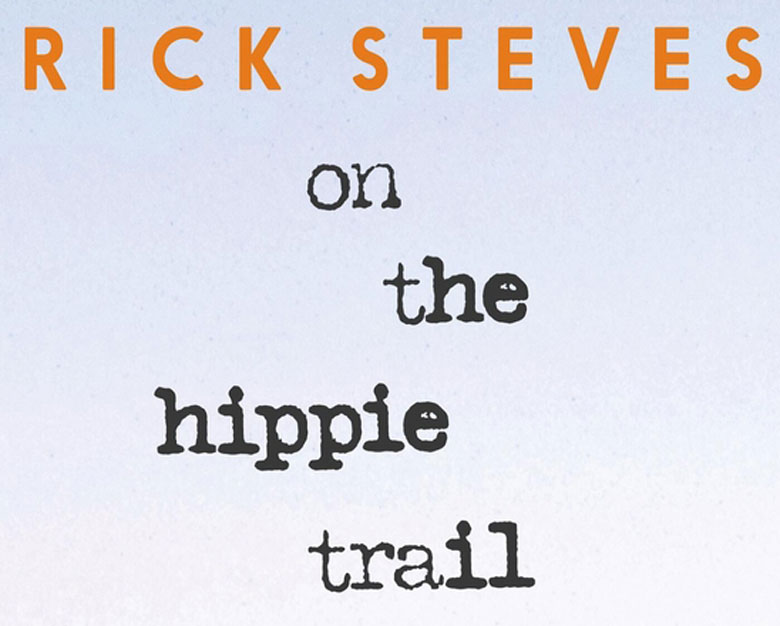On the Hippie Trail
By Rick Steves (2025), Avalon Travel
I’ve long been a fan of Rick Steves, whose travel programs air regularly on PBS. My wife recently asked me why I liked him so much, and I had to think for a moment, and concluded it’s as much for what he doesn’t do as for what he does.
If I see a travel show about a place I know, too often I’m left aggravated at how the host has missed the essence of the place in favor of some active, colorful, made-for-TV moments.
As if everyone who visits Quebec City in winter rows a boat across the mostly frozen river. And everyone who visits Cape Cod takes an off-road vehicle across the beach. And Boston is all duck boats and Irish bars.
Steves has been described as the Mr. Rogers of travel programs, and if that’s accurate, On the Hippie Trail creates some clashing images. Steves did indeed have longish hair and a beard in the book jacket photo, taken when he wrote this book in 1978. But then and now, he wouldn’t be confused for gonzo travel writer and TV personality Anthony Bourdain.
Steves has published dozens of travel guides, but On the Hippie Trail is actually a journal he kept in 1978, seeing the light of day for the first time this year. He explains that he unearthed it at home during the travel-less days of the pandemic.
The subtitle—Istanbul to Kathmandu and the Making of a Travel Writer—is accurate. Though he never intended to publish the journal, we witness a keen observer taking in landscapes and cultures that were fantastically exotic to a 23-year-old American.

Already at that tender age, Steves had been to Europe several times, and while tempted to take another summer visit there after graduating college, he writes of the Far East beckoning. And so, with his buddy Gene, he travels on the cheap—rickety buses and over-crowded trains—from eastern Europe through Turkey, Iran (just prior to the Islamic revolution), Afghanistan (just before the Soviet invasion), Pakistan, India, Kashmir, and finally, Nepal.
Cheap, yes, but as Americans, they live pretty well. They’re frugal at times, enduring cramped bus seats, and they even join fellow passengers in defying a driver who tries to shake them down as they cross the desert, but they splurge near the end for some decent accommodations in India.
Steves is aware of his privilege, but, as the introduction notes, he’s left in what today might be considered culturally insensitive thoughts.
In Iran, he writes: “We watched the English news which seems to be more of a daily reminder that instability reigns all over this corner of the earth. You can’t put a price tag on the value of being an American. I am spoiled.”
Spoiled, but not insensitive. What lifts the journal above the personal is the way he engages with others along the way, being inquisitive and often unsuspicious about motives. The reader is treated to surprisingly deep sketches of those he meets. Color photos taken along the way enhance the descriptions.
The writing is deft and expressive.
Wandering afield in Kashmir, Steves encounters “a cozy-looking dwelling made of stacked stones. Animal pelts hung on a tree outside, sleds leaned on the wall, quietly awaiting the first winter snowfall.”
He boldly introduces himself to children, who then invite him inside, where no trace of the 20th century is evident. “Nor the 19th or 18th. Really! The father was sleeping on leaves but woke up with a gleam in his eyes and a warm handshake.” The family was “totally detached from any outside influences, yet it seemed like a comfortable existence.”
Perhaps there is some irony lost on the young Steves as he carries a big dose of modernity into the hut, but his innocence and openness seem to genuinely win affection from those he meets.
One unintentional bit of humor in the journal comes when Steves writes about experimenting with hashish and cannabis for the first time, something he assiduously avoided in his college years. As he prepares to return home, he asserts that he can’t see using the substance again.
Today, Steves is an outspoken advocate for cannabis use, and he has served on the board of the National Organization for Reform of Marijuana Laws.
Tom Groening is editor of The Working Waterfront.





